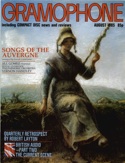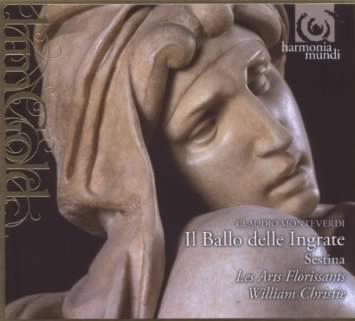Texte paru dans: / Appeared in: |
|
|
Outil de traduction (Très approximatif) |
|
|
Reviewer:
Denis Arnold There I was, last month , complaining that the Leppard version of Monteverdi's II ballo delle ingrate was now sounding out of date, and here is a new recording made by a group which is well known for understanding seventeenth-century music . To which is added one of the composer's greatest works, the Sestina, or Lament for Caterina Martinelli, from the Sixth Book of Madrigals. What could be more desirable?
Well, there are some snags; but first a word of praise for the general conception of this version of the Ballo. There are problems of interpretation, not least how to make the piece dramatic and yet still a ballet de cour. Christie makes various alterations to the score (such as interpolating a ballet where it is not marked), but they all seem to work . He rightly uses a team of continuo players, after the manner of Orfeo, to under line the different characters and moods. His string ensemble is delightful. Of the soloists, the bass Gregory Reinhart singing Pluto is the best, not letting rip as a basso profondo, which is the temptation, but using the lighter tones of his voice. The Venus, Guillemette Laurens, is agreeable also. Less likeable are both Cupid (Amore), Agnes Mellon and the solo Ingrate at the end, Jill Feldman, who having one of Monteverdi's greatest laments to sing, proceeds to over-do 'it rather grotesquely; for the point of the lament is that she must suffer the torments of Hades because she is pure and has not yielded to Vincenzo Gonzaga and his merry courtiers: a knowing, sophisticated tone takes away the point. One must also say that there are some strange speedings up and slowings down which seem out of place (the fluctuations of speech rhythms in recitative are another thing) especially in the dance music which must surely be almost rigid in tempo.
I enjoyed the Sestina more. True, it is transposed upwards which makes it seem brighter than perhaps it should. Still, the style of singing is good and the employment of continuo instruments quite justified. It is indeed a masterpiece, better even than the more famous Lamento d'Arianna and the disc is well worth having for this alone. The recording is good.
~~~~~~
Gramophone
(08/1985) |
|
|
|
|
|
Cliquez l'un ou l'autre
bouton pour découvrir bien d'autres critiques de CD |
|




